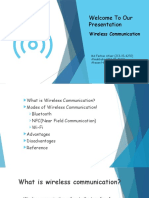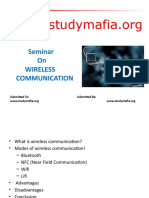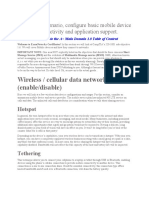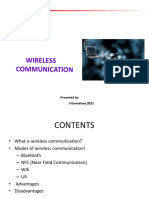Module 3 Summary: Wireless Network and Mobile Device Connectivity
Mobile devices connect wirelessly using various technologies for communication and data
exchange.
Bluetooth: Enables short-range communication between devices.
Wi-Fi: Connects smartphones to routers and the internet using radio waves. Utilizing Wi-Fi is
generally preferred over cellular data due to cost-effectiveness (not counting against data plans)
and lower power consumption. Wi-Fi availability is often found in hotspots.
NFC (Near Field Communication): A short-range wireless technology employing
electromagnetic fields for quick and secure communication, commonly used for contactless
payments (e.g., connecting to cash registers).
Cellular Networks: Mobile phones interact with cellular networks using radio frequencies for
voice calls and data plans for internet access.
Other Phone Connection Methods:
GPS: Utilizes satellite signals for global positioning, providing location accuracy within
approximately 10 meters.
Wi-Fi: Enables connection to local networks and the internet when the phone is within
range of wireless access points.
Hotspots: Geographic areas where Wi-Fi signals are accessible.
Precautions for Protecting Wi-Fi Communications:
Avoid transmitting passwords or login credentials in unencrypted plaintext.
Utilize a VPN (Virtual Private Network) when sending sensitive data, especially on
public Wi-Fi, as it encrypts internet traffic.
SSID (Service Set Identifier): The name broadcast by wireless routers/access points to
identify available networks.
Examples of Bluetooth Usage:
Hands-free headsets
Keyboards and mice
Stereo controls
Tethering (one device sharing its data connection with another)
Bluetooth Pairing: The process where two Bluetooth devices establish a connection to share
resources or data.


























































